Our aim is sustainable office building management
As Germany's largest environmental and climate bank, KfW Bankengruppe has set itself the target of keeping its emission values even lower than the permissible limits and surpassing current standards in its own office buildings. KfW intends to lead the way in the use of new energy-saving technologies.
All facility management decisions are based on strict criteria. One of our fundamental objectives is sustainable construction, which as well as protecting the ecosystem and future resources also offers low-cost structures.
KfW's operations are carbon-neutral
KfW's operations have already been carbon-neutral for several years. We procure only certified green electricity for our 4,300-strong workforce, which makes a major contribution to CO2 abatement (9,400 tonnes per year). Sustainable facility management calls for the use of energy-saving systems and equipment. Whenever we invest in new buildings we always ensure that the facilities in place incorporate the latest innovations, in order to reduce consumption, costs and emissions.
One example is the 'East Arcade' office building at our Frankfurt site, where heat is generated mainly through solar power and renewables. Modern, highly-efficient evacuated tube collectors are used to produce hot water, and support heating of the residential facilities. A large proportion of the heat required is provided by a wood pellet system that does not burden the atmosphere with the greenhouse gas carbon dioxide.
KfW uses photovoltaic systems and block-type thermal power stations run on natural gas
The stringent criteria that KfW implements in its technically and ecologically sophisticated concepts are also reflected in the use of photovoltaic systems and block-type thermal power stations run on natural gas. The best possible use is made of daylight by controlling the lighting using light redirection, and by only adding artificial light as necessary if there are people present.
Or let's examine the topic of "water" as an example, where KfW is making a key contribution to conserving resources. Using a combination of vacuum drainage, water treatment and rainwater harvesting, we make use of every opportunity to conserve drinking water as an increasingly valuable resource. Only what is known as "black water" is fed into the sewer system. "Grey water" (slightly soiled water from hand basins, kitchens, etc.) and rainwater are completely reused, for example as a coolant for technical purposes, for room maintenance or for toilet flushing. The use of vacuum technology is modelled on aircraft. The toilets have been equipped with the latest in vacuum technology in order to combine the rational and therefore ecologically economical use of water with the best possible comfort. Vacuum toilets only use one sixth of the water used in standard toilets. They also use grey water.
Another goal in connection with the sustainable management of our own buildings is to minimise energy consumption in terms of primary energy requirements. In its Ostarkade building, for example, KfW has reduced its primary energy requirement by 70% to 125 kWh per square metre. One key element is the upflow ventilation, where cold air flows into the building at night via the opened façades while the warm air rises out via an atrium.The stringent criteria that KfW implements in its technically and ecologically sophisticated concepts are also reflected in the use of photovoltaic systems and block-type thermal power stations run on natural gas. The best possible use is made of daylight by controlling the lighting using light redirection, and by only adding artificial light as necessary if there are people present.
The new Westarkade building is one of the most energy-efficient office buildings in the world
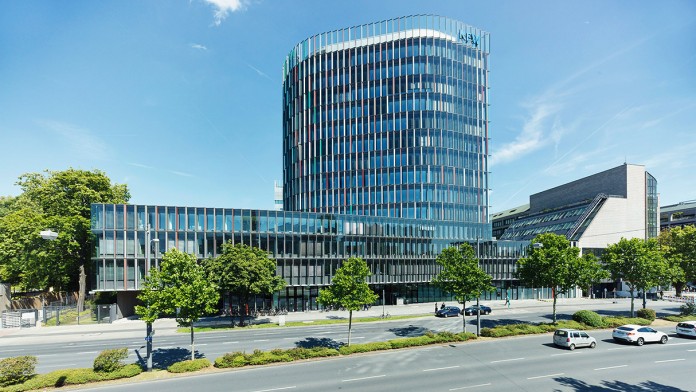
We are constantly expanding our knowledge of energy technologies to ensure the sustainability of energy consumption in our buildings. Our newest office building in Frankfurt, for example, the Westarkade, is one of the most energy-efficient office buildings in the world thanks to its pressure ring façade and the use of geothermal energy. In November 2011, the Council on Tall Buildings and Urban Habitat (CTBUH) based in Chicago awarded the Westarkade the title of "CTBUH 2011 Best Tall Building Worldwide". The CTBUH bestowed the award on the basis of the building's design, technical innovations and energy efficiency, as well as its impact on the city and its inhabitants.
The Westarkade's striking façade not only gives the building its unmistakable appearance, but also holds the secrets to a number of innovative solutions aimed at minimising energy consumption. This is illustrated by the Westarkade's ventilation and temperature control system. The two-layer pressure ring façade allows natural ventilation whatever the weather while also providing a high level of insulation and protection against the sun. As a result, the offices can be ventilated naturally for about two thirds of the year without the need for any mechanical ventilation. During the cold months, the double façade also acts as a kind of thermal solar collector as the air flowing in is warmed by the sun's rays. The temperature in the building is controlled by means of a thermoactive concrete pavement system supported by geothermal energy. This involves air that is low in pollutants being taken in from the neighbouring botanical garden via a subterranean channel, with the difference in temperature between the air outside and the soil being used to regulate its temperature in advance.
A regular, operating evaluation of energy consumption and the permanent maintenance, repair and monitoring of the building and its facilities is required to ensure that the targets are met. KfW manages and monitors these processes with the help of state-of-the-art, database-supported computer systems, using high-performance building automation and independent energy monitoring.

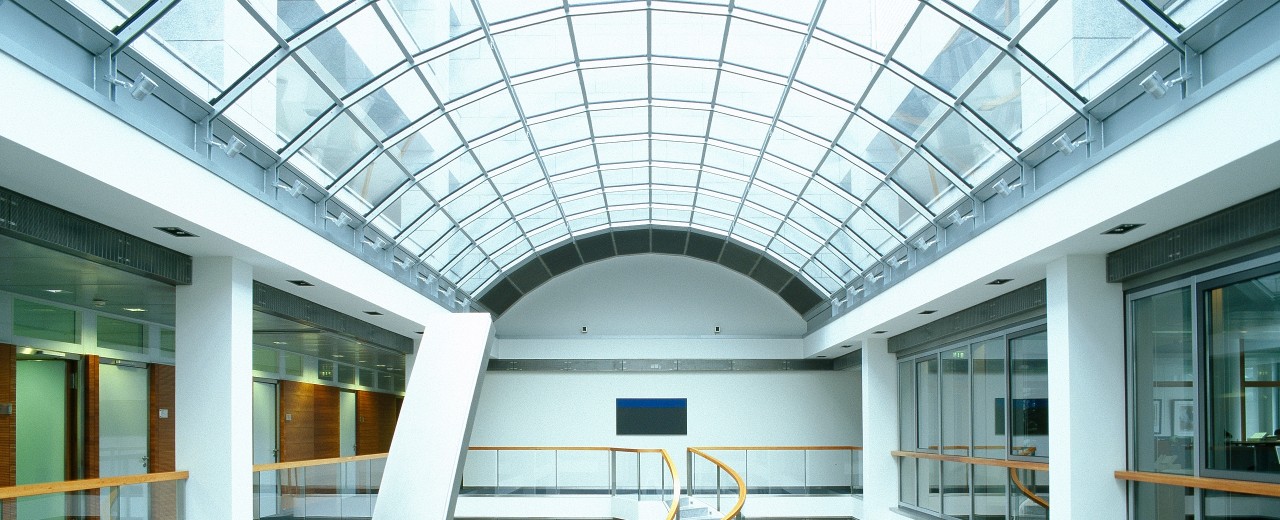
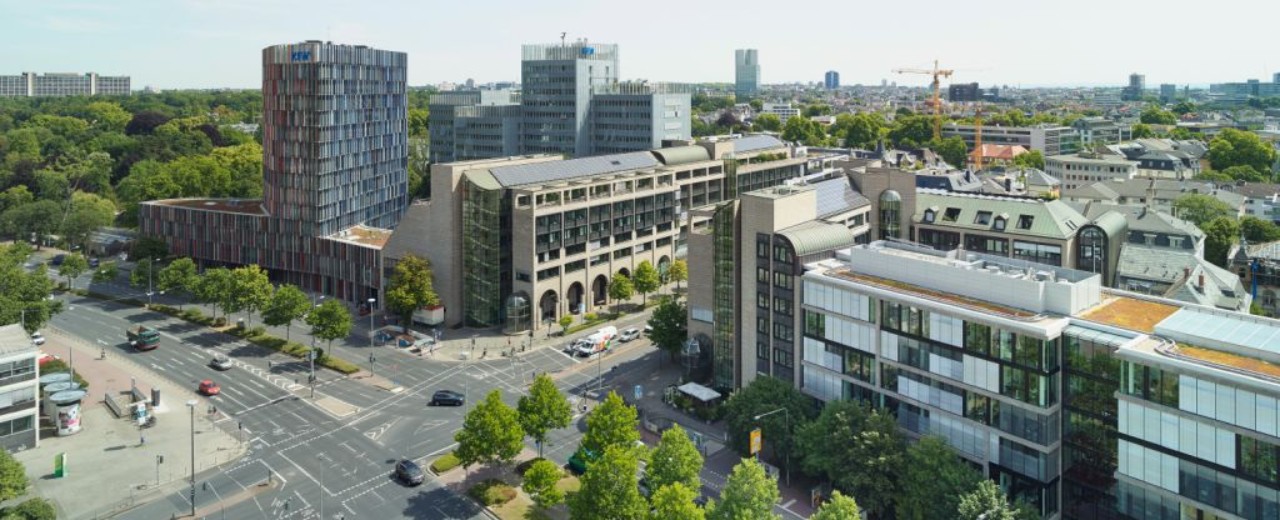
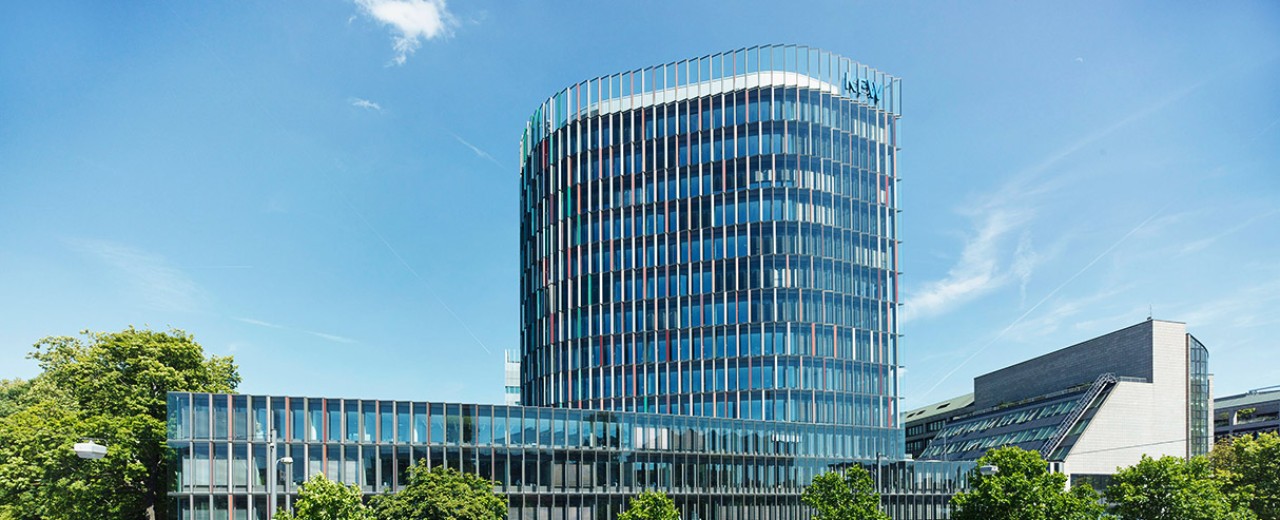
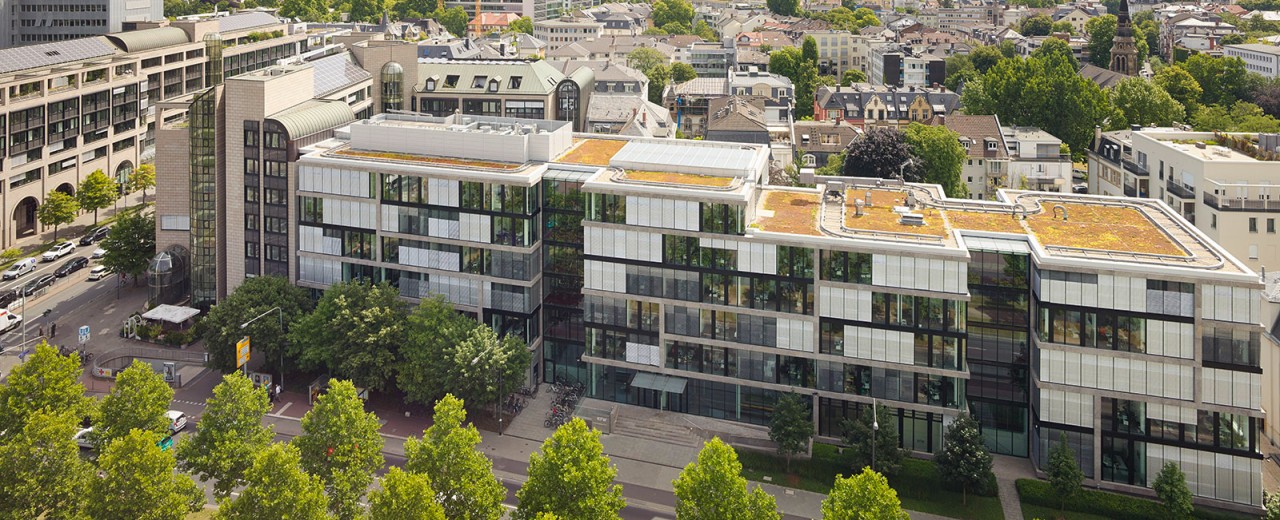
Share page
To share the content of this page with your network, click on one of the icons below.
Note on data protection: When you share content, your personal data is transferred to the selected network.
Data protection
Alternatively, you can also copy the short link: https://www.kfw.de/s/ennBgqw6
Copy link Link copied